Domestic "iPhone Alternative" War: Four Fruity Phones, Who Makes Apple Anxious?
![]() 12/30 2024
12/30 2024
![]() 722
722
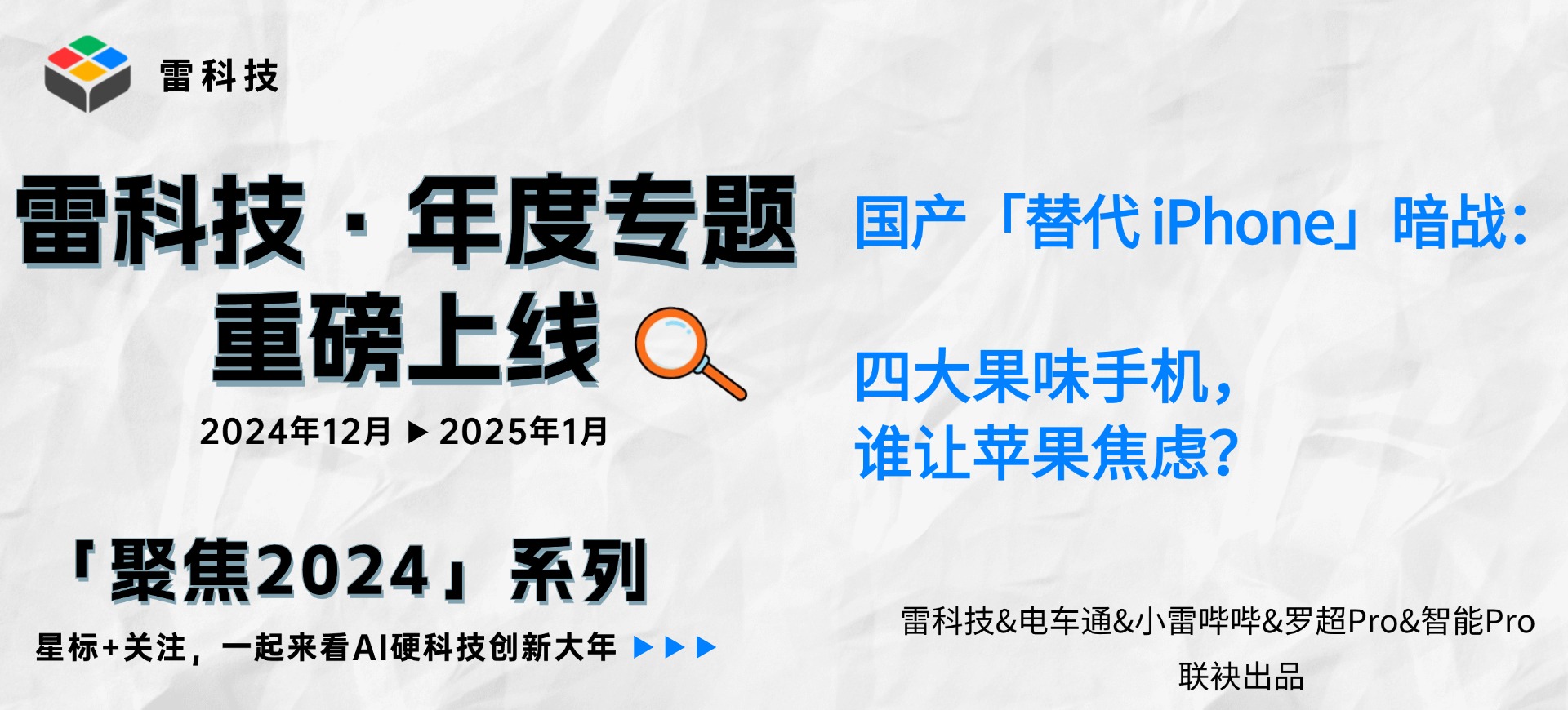
2024 marks a significant year for AI hardware innovation.
"Focus on applications, not just specifications" has become an industry consensus. On one hand, AI capabilities are integrated into hardware, leading to an explosion of AI-enabled devices across various industries such as mobile phones, PCs, home appliances, automobiles, cleaning robots, furniture, headphones, cameras, and storage solutions. On the other hand, AI is profoundly transforming software, with native AI applications like Wenxiaoyan and Doubao gaining popularity and traditional services like search, input methods, browsers, payments, office software, and e-commerce being reimagined by AI.
AI has emerged as a "magic wand" for technological innovation, and this is merely the beginning.
In December, the "Leiji Technology·Annual" special report was launched, with "Focus on 2024" systematically reviewing the noteworthy companies, products, technologies, and personalities in the tech industry this year, and "Outlook 2025" providing a sneak peek at the exciting products and technologies anticipated in 2025. This report honors innovation, documents our era, and inspires the future.
Please subscribe and stay tuned.
In 2024, iPhone users may find themselves facing an abundance of choices for daily-use alternatives. From Xiaomi 15 to OPPO Find X8, from vivo X200 Pro mini to Huawei Mate70 series, all these devices, to varying degrees, "replicate" the iPhone user experience.
Indeed, it's not new for smartphone manufacturers to imitate, benchmark against, or even compete for iPhone users. From Xiaomi 8 mimicking the iPhone X's notch to the resurgence of right-angle frames, the iPhone has always been a significant "learning object" for other smartphone makers.
However, this year's wave of "learning from the iPhone" carries a different significance: manufacturers are no longer merely mimicking the iPhone's design but seriously studying and benchmarking its user experience on flagship devices.
For example, many iPhone users are also part of the Apple ecosystem. This year, various manufacturers are supporting Apple's unique file formats and enabling cross-device collaboration with Macs. Additionally, Live Photo, an image format bridging the gap between photos and videos, was once almost exclusively used by iPhone users in China, but overnight, multiple manufacturers began supporting it, even being compatible with Live Photo files taken by iPhones.
Undoubtedly, these actions aim to reduce the switching costs for users moving from the iPhone, thereby attracting more iPhone users to make the switch.
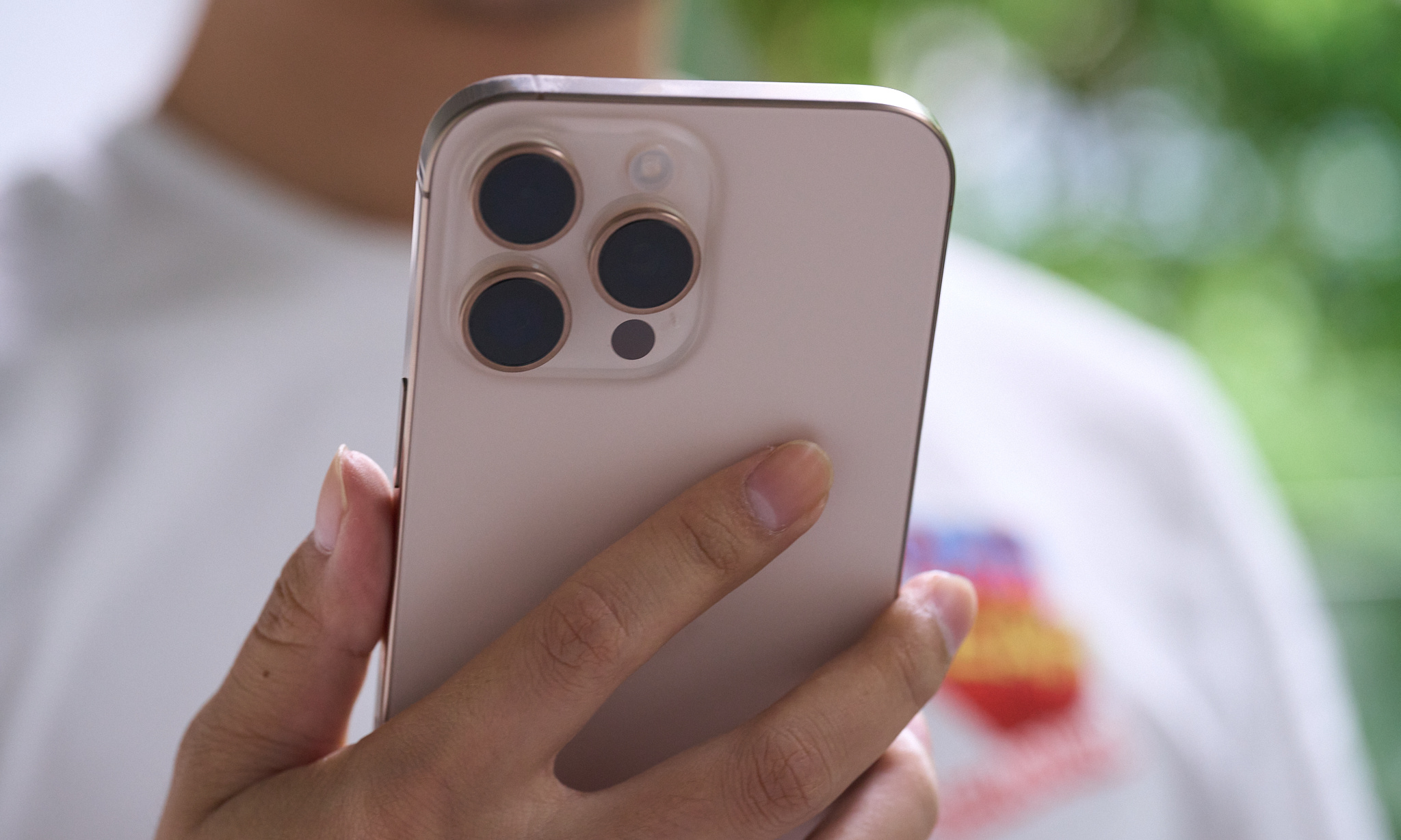
Photo/Leiji Technology
From this perspective, "replacing the iPhone" has become a covert battle in the flagship smartphone market in 2024. Among them, some models have stood out and can be deemed this year's "iPhone Alternative of the Year".
Xiaomi 15: Crossing the Apple ecosystem barrier, from design to experience
Recently, Lu Weibing, President of Xiaomi Group, bluntly stated during an event that Xiaomi 15's success stems from the goal set in 2021 – to comprehensively benchmark against Apple. In late 2021, Xiaomi launched the Xiaomi 12, beginning to benchmark against the iPhone's standard edition, focusing on small-screen flagships, a strategy persisted until the explosive popularity of Xiaomi 13.
In 2024, Xiaomi 15 continues the previous small-screen flagship strategy but goes beyond mere imitation, offering another possible, superior design option in the frame transition – wrapping the frame around the back panel. However, what's more crucial is Xiaomi 15's user experience and its compatibility with the Apple ecosystem.
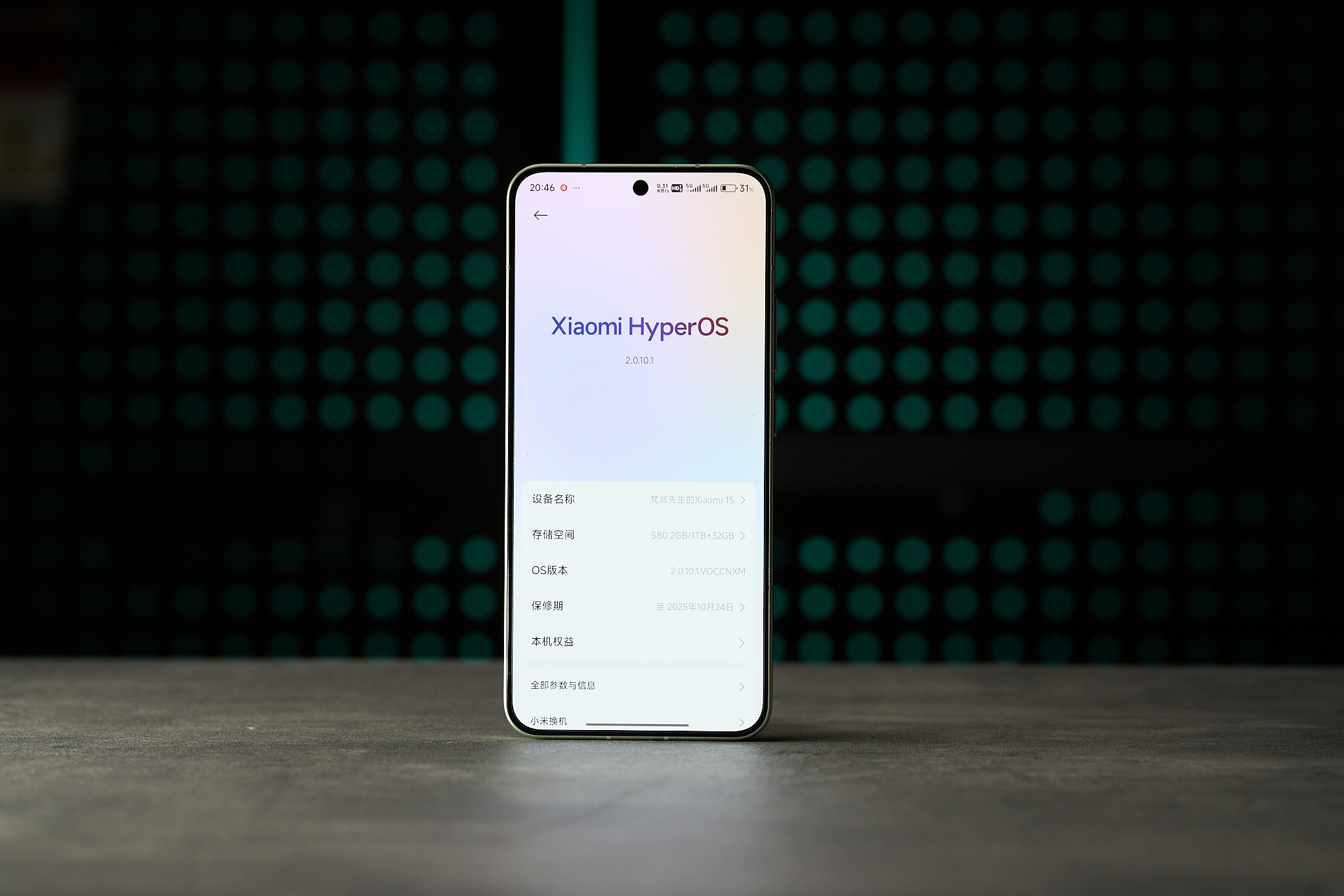
Photo/Leiji Technology
Previously, it was challenging for Android phones to penetrate Apple's ecosystem barriers, often deterring users from switching due to concerns about file transfer and device linkage inconveniences.
Based on HyperOS 2.0, Xiaomi 15 proactively addresses this issue, supporting rapid file transfer and screen mirroring with Mac devices. Even iPads and iPhones can achieve near AirDrop functionality through Xiaomi's interconnection service app. While still not as convenient as native AirDrop, it offers certain speed advantages.
Simultaneously, Xiaomi supports viewing Apple-exclusive format documents like Keynote, Numbers, and Pages, as well as Live Photo functionality. However, Xiaomi's compatibility with Apple extends beyond these basics. More crucially, Xiaomi has a deep "penetration" plan for the Apple ecosystem, particularly from an IoT perspective.
In December, Xiaomi finally launched the official Apple Home Assistant integration, breaking down barriers between the Mijia ecosystem and the Apple Home Assistant ecosystem. This allows Mijia smart devices to seamlessly connect, enabling users to switch freely between iPhones and Xiaomi devices without reconfiguring smart home settings.
Moreover, Lei Jun revealed earlier that Xiaomi has mandated since the beginning of the year that "all multi-terminal devices, including cars and homes, must support Apple users to better integrate and connect them into the Xiaomi ecosystem." Earlier leaks also indicated that Xiaomi has even begun planning compatibility with Apple products such as Apple Watch, AirPods, and HomePod.
OPPO Find X8: Proudly earning the title of "Strongest Fruit Flavor" with OPhone
Perhaps inspired by Xiaomi and Honor's "comprehensive benchmarking against Apple," OPPO has made significant efforts this year to emulate Apple, with the Find X8 series embodying this from its promotional "OPhone" and "fruit flavor" to the independent camera button on the ID design.
Even this month, market rumors circulated that OPPO was applying for the "ophone" trademark. However, it's worth noting that as early as 2009, China Mobile had already launched its OPhone based on Android. OPPO's promotion of OPhone, while possibly just a marketing "strategy," sufficiently demonstrates OPPO's ambition: not just to imitate the iPhone but to challenge its status.
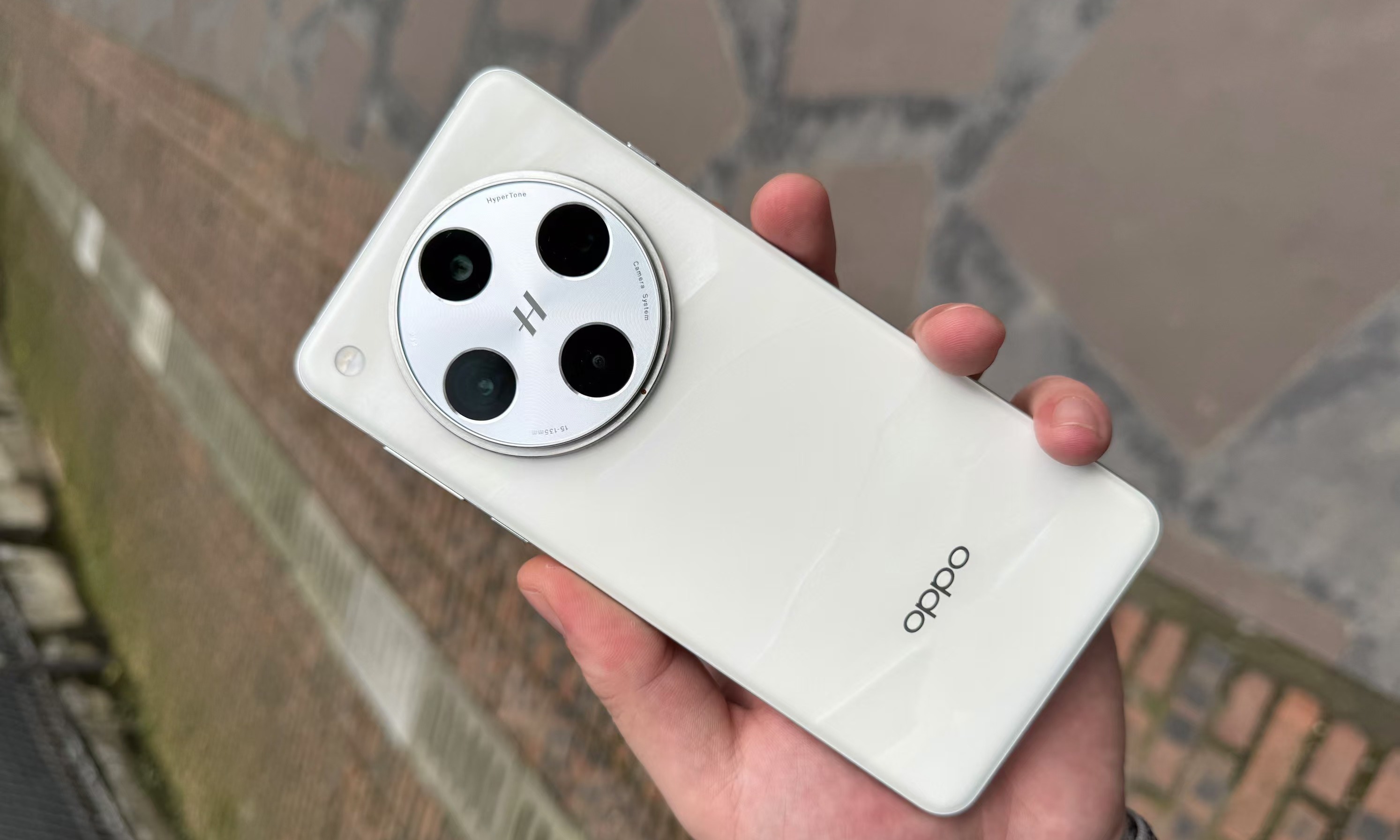
Photo/Leiji Technology
This strategy is evident in the ID design, with OPPO Find X8 adopting a right-angle frame + straight screen design and featuring an independent camera button on the frame's lower part, "paying homage" to the iPhone. Additionally, OPPO's system not only boasts more delicate animation effects but also mimics the iPhone in many details, including the Dynamic Island interaction method and UI specifics.
However, the real highlight of Find X8 isn't just its appearance but its deep replication and functional surpassing of the Apple user experience. OPPO has launched its own O+ interconnectivity, enabling cross-Apple ecosystem transfer experiences, and supports the new one-touch transfer interaction introduced in iOS 18.
Simultaneously, OPPO Find X8 is fully compatible with the iPhone's Live Photo, going a step further than Xiaomi. Furthermore, OPPO has introduced a magnetic ecosystem compatible with Apple, further attracting Apple users.
For users switching between iPhones and Android phones, these changes undoubtedly offer great convenience, making it seamless for those accustomed to the iPhone user experience and reliant on the Apple ecosystem to switch to OPPO Find X8.
vivo X200 Pro mini: One of the only two choices for small-screen Pro flagships
In 2024, the explosion of small-screen flagships became a phenomenon, with many 6.3-inch flagship options suddenly available. However, upon closer inspection, there are actually only two small-screen Pro models: iPhone 16 Pro (6.3 inches) and vivo X200 Pro mini (6.3 inches).
It can be said that vivo X200 Pro mini's positioning directly benchmarks against the iPhone 16 Pro. With similar dimensions, the X200 Pro mini also offers a lighter body and a larger battery – up to 5700mAh.
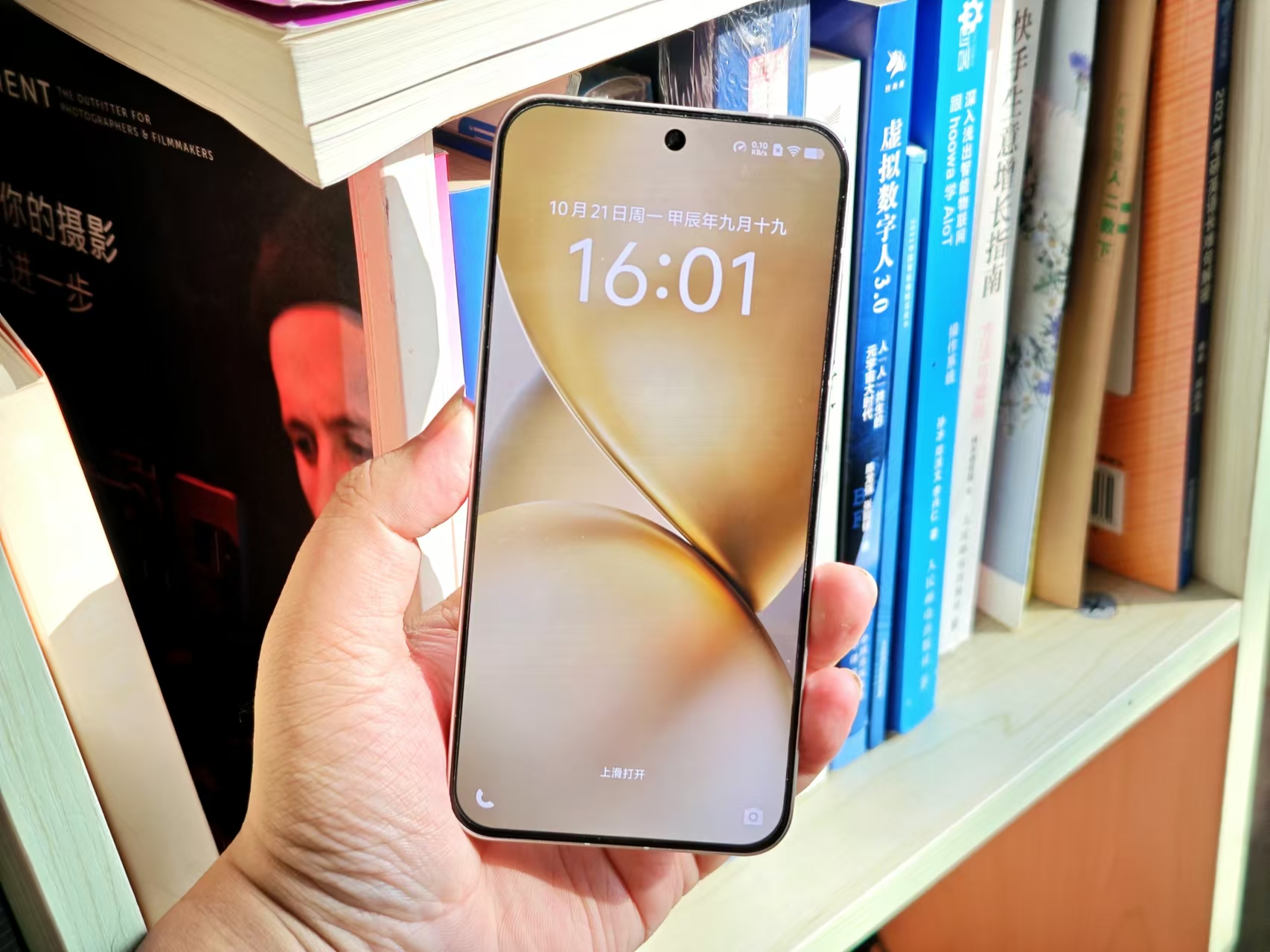
Photo/Leiji Technology
However, hardware is just one aspect. To attract iPhone users, efforts must also be made in software and the ecosystem. In fact, vivo has done a relatively early and better job in cross-Apple ecosystem collaboration, not only supporting the viewing of Apple-exclusive format files and Live Photos taken by iPhones but also providing a cross-platform office solution tailored for Mac in vivo's office suite, enabling direct cross-platform office collaboration with the vivo X200 Pro mini.
Through these targeted optimizations in design and functionality, the vivo X200 Pro mini not only meets the needs of iPhone users for small-screen flagships but also provides a smooth transition solution for vivo users to exit the Apple ecosystem by being compatible with it.
Undoubtedly, in the flagship smartphone market in 2024, the vivo X200 Pro mini can be fully considered as one of the best alternatives to the iPhone.
Huawei Mate70: Native HarmonyOS, an experience beyond iOS
As everyone knows, the soul of the iPhone lies in iOS.
Unlike other flagship phones that imitate the iPhone's ID design to varying degrees, the Mate 70 series actually continues Huawei's unique design style and philosophy. Simultaneously, the Huawei Mate 70 series doesn't actively compatible with the Apple ecosystem, lacking both an "AirDrop"-like solution for iPhones and a cross-platform collaboration solution similar to vivo's office suite.
But the key is that the Huawei Mate 70 series, equipped with HarmonyOS NEXT (native HarmonyOS), has quietly embarked on a path of "converging towards iOS" in system design and experience, absorbing many successful iOS elements.
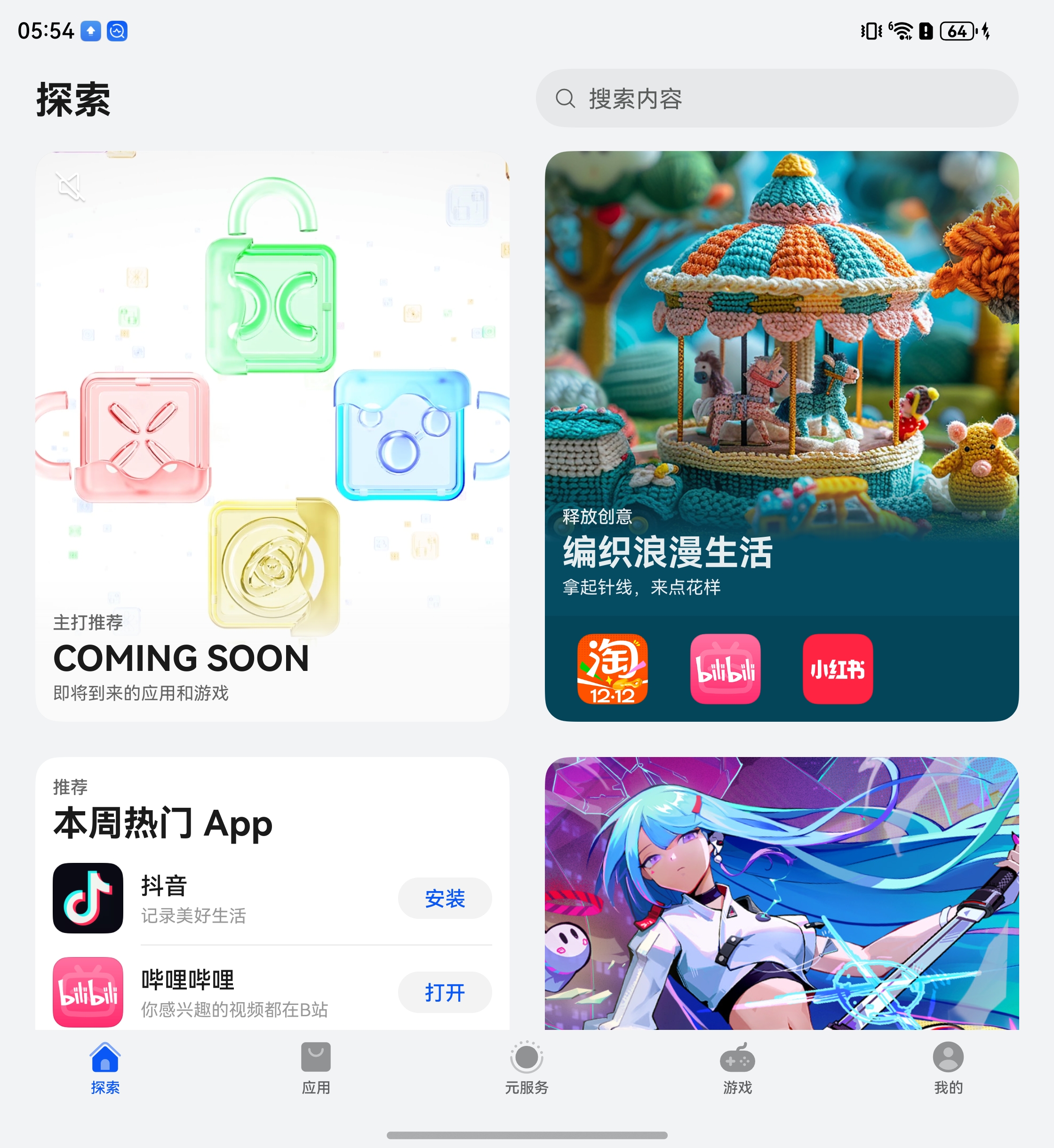
Photo/Leiji Technology
One detail is that HarmonyOS NEXT incorporates a lot of magazine-style design into system applications like the App Store and Huawei Music, designs long popular in Apple's App Store and Apple Music. But HarmonyOS NEXT also provides a smoothness similar to iOS, evident in the delicacy of its animations.
Furthermore, Huawei has introduced a "tombstone mechanism" similar to iOS for background management, optimizing resource allocation by freezing the running state of background applications and allowing them to resume their previous state at any time. Thanks to its larger memory, the Huawei Mate 70 series also excels in background activity preservation in actual use.
More importantly, HarmonyOS NEXT actually follows a strategy closer to iOS in building the application ecosystem, strictly controlling application quality and distribution channels, and disallowing third-party sideloading, thereby attempting to ensure a more consistent application experience.
In summary, the Huawei Mate 70 series doesn't imitate the iPhone's appearance, but HarmonyOS NEXT does learn from iOS's advantages in smoothness, consistency, and ecosystem experience to a large extent, leading the way with the Mate 70 series in its unique approach.
As long as Android wields its "shovel" well, can it still dig up Apple's corner?
From Xiaomi 15 to OPPO Find X8 and vivo X200 Pro mini, the Android camp is breaking down ecosystem barriers in innovative ways: by supporting Apple's unique features, optimizing file transfer experiences, and even directly accessing HomeKit, reducing the cost for users to "escape" from iPhones.
However, the Huawei Mate70 series has chosen a different path, with HarmonyOS NEXT learning from and reimagining the iOS system experience, providing users with a familiar yet unique experience.
For Apple, this is not good news, as the iPhone's market share in China has dropped to an all-time low. According to market research firm Counterpoint Research, Apple even fell out of the top five in China's smartphone market in the third quarter of this year.
But for iPhone users, the deep compatibility of the Android camp with the Apple ecosystem, the alignment of experiences, and even another iOS-like experience are providing more and better choices, no longer limited to Apple alone.
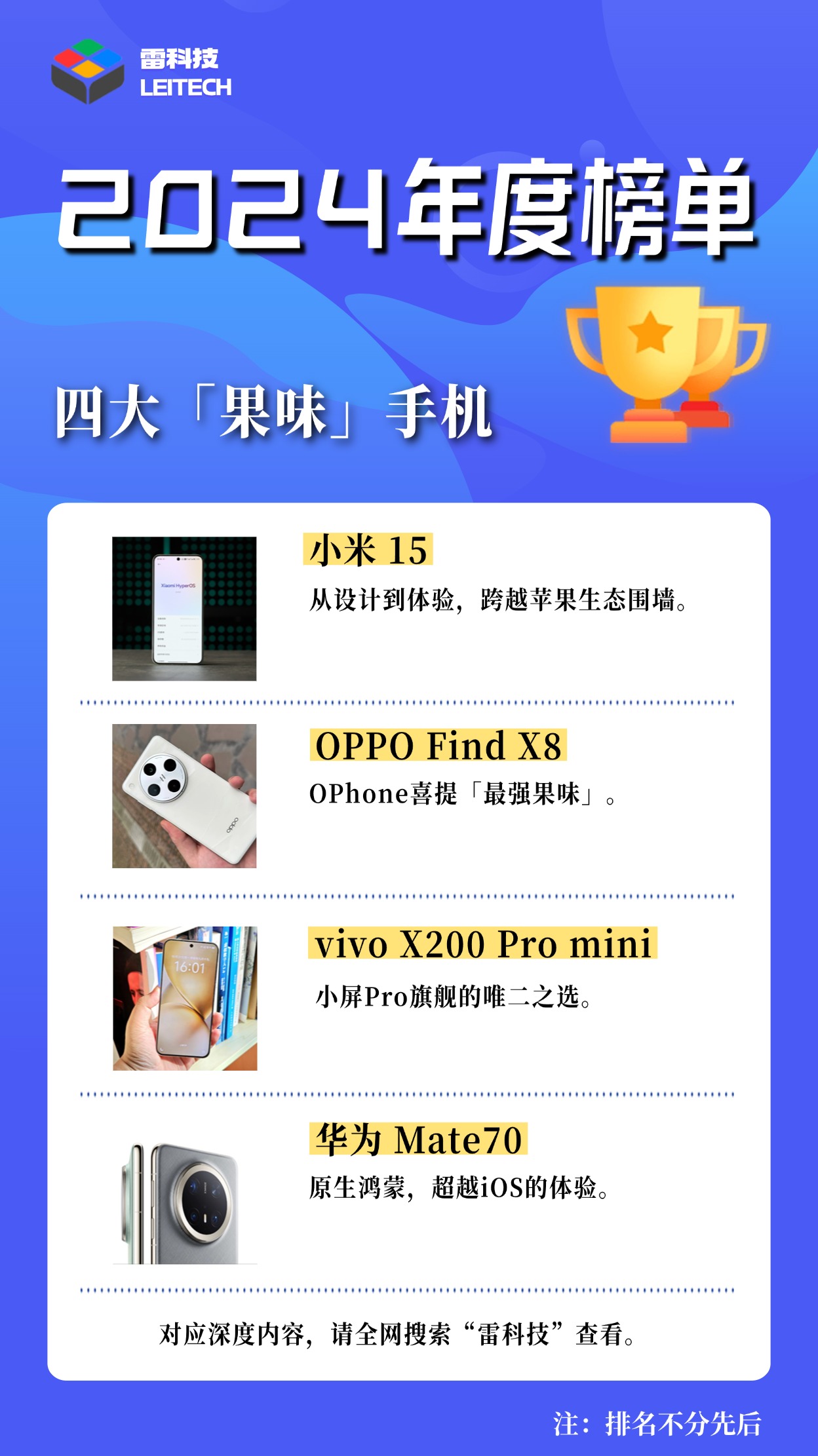
Source: Leiji Technology








